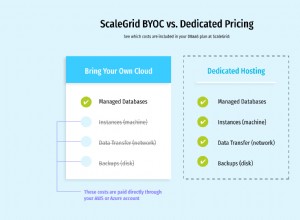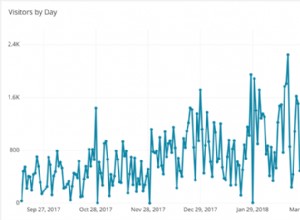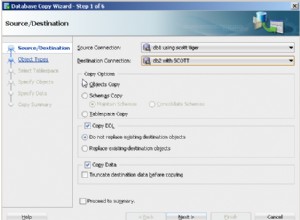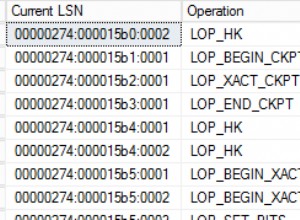Expandindo a resposta do KM, você precisa de uma tabela de datas que seja como uma tabela de números. Existem muitos exemplos na web, mas aqui está um simples.
CREATE TABLE DateList (
DateValue DATE,
CONSTRAINT PK_DateList PRIMARY KEY CLUSTERED (DateValue)
)
GO
-- Insert dates from 01/01/2015 and 12/31/2015
DECLARE @StartDate DATE = '01/01/2015'
DECLARE @EndDatePlus1 DATE = '01/01/2016'
DECLARE @CurrentDate DATE = @StartDate
WHILE @EndDatePlus1 > @CurrentDate
BEGIN
INSERT INTO DateList VALUES (@CurrentDate)
SET @CurrentDate = DATEADD(dd,1,@CurrentDate)
END
Agora você tem uma mesa
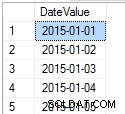
então você pode reescrever sua consulta da seguinte forma:
SELECT top (5) DateValue, isnull(Count(id),0) as Counted
FROM DateList
LEFT OUTER JOIN Table
on DateValue = CAST(Created AS DATE)
GROUP BY DateValue
order by DateValue desc
Duas notas:você precisará de uma cláusula where para especificar seu intervalo. Uma junção em uma conversão não é ideal. O tipo em sua tabela de datas deve corresponder ao tipo em sua tabela normal.

